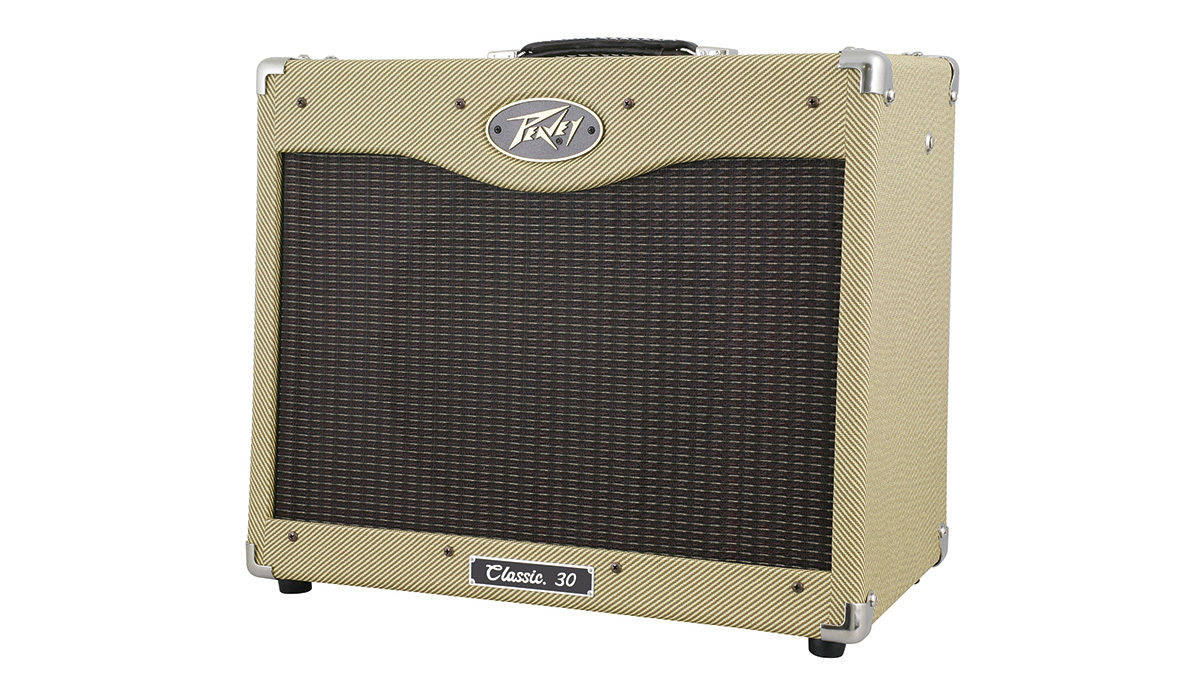MusicRadar Verdict
Classic by name, classic by nature.
Pros
- +
Great for small-to-medium gigs. Good all-rounder.
Cons
- -
Not the cheapest out there. Not a great deal of tonal difference between channels.
MusicRadar's got your back
The Peavey Classic range was introduced back in the early 1990s, coinciding with the end of the rack era, and a rekindled interest in simpler, vintage-styled amps.
The Classics represented Hartley Peavey's tribute to the tweed amps of the 1950s, but with improved features and more versatile sounds. Ever since, they've enjoyed popularity and remain a firm favourite with many working musicians.
A few years ago the range was revised, with restyled cabinets and various minor electronics changes, although the essential sounds and controls remain more or less identical.
One change that's gone largely unnoticed is a move to overseas manufacturing - the Classic, like many other mid- priced amplifiers, is now made in China. It remains, however, a footswitchable, two-channel design with shared EQ and spring reverb, while the lead channel has a boost, which is now also footswitchable.
Along with a standby switch, this is one of the few external changes. The tweed-covered ply cabinet keeps the same dimensions, but with an oval lozenge in the front top panel to hold the Peavey logo, while the chrome steel chassis is still there, with white lettering and chicken- head knobs that go up to 12.
Classic fans will note that the original Blue Marvel loudspeaker has been replaced with a Stephens Tru-Sonic M12C. Inside, the circuit board is slightly different, but with the same clean, economical layout that's typical of Peavey amps.
The Classic starts up smoothly, with very little hiss or hum. The clean channel is warm, with a fat midrange and a sweet treble that's a good compromise between the 'tweed' and 'blackface' clean benchmarks, pretty much the same as we remember it.
The lead channel has a lot of flexibility, helped by the boost function. At lower gain settings, there's a great touch-sensitive edge to the sound, which is great for blues and country. Give it some beans and you're in the classic rock zone, with a throaty, warm distortion and edgy Vox-like harmonics combined with a slightly compressed dynamic response. This helps sustain, and gives the amp a lively response that's very easy to play.
Apart from the increase in gain there isn't a lot of tonal difference between the two channels because of the shared EQ; however what you do have is a great all-round tone that fits most styles very nicely. The Classic's relatively low preamp gain also suits pedals, either between guitar and input, or in the simple series effects loop.
With possibly the best combination of power and portability in the Classic range, the Classic 30 112 is an ideal club amp. It's great for most small-to- medium gigs and equally useful for home practice and recording studios, thanks to its low noise levels.
While it isn't the cheapest in its class, the superior tones and build quality mean today's Classic is still good value for money.
“This update reflects everything we believe modern gear should be”: Neural DSP gives the Nano Cortex an almighty power-up with free NanOS 2.0.0 system update
“It’s honestly got me thinking hard about adding one to my own studio set up”: Two Notes Reload II review
“Gloriously adorned with a gold edge burst finish over a gold paisley and sparkle top”: Gretsch unveils the Paisley Penguin – a rare bird that growls – and the Honey Dipper Special, a resonator for all your roots rock manoeuvres










